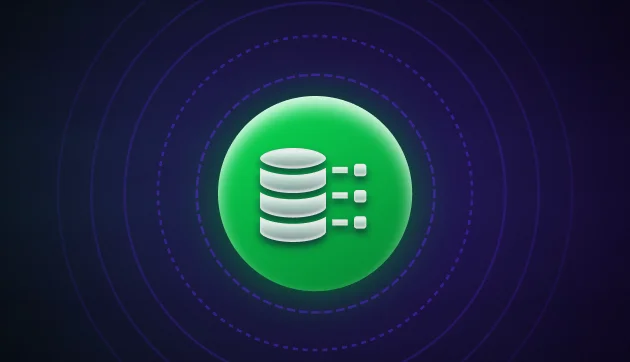
What is Data Mining? A Beginner’s Guide
Jan 30, 2025 7 Min Read 7509 Views
(Last Updated)
In today’s digitally interconnected world, data is not just abundant but also incredibly valuable. Organizations across industries are using vast amounts of data to understand hidden patterns, trends, and insights that can drive strategic decision-making and innovation. At the heart of this data revolution lies a powerful technique known as data mining.
Data mining is more than just a buzzword—it’s a process that allows analysts and data scientists to sift through vast datasets to discover meaningful correlations and patterns. In this blog, we will explore the fundamentals of data mining, its techniques, applications across various sectors, and its important role in shaping the future of industries worldwide. Let’s begin!
Table of contents
- What is Data Mining?
- What is Data Mining? A Beginner's Guide
- Techniques and Methods
- Process of Data Mining
- Applications of Data Mining
- Challenges and Considerations
- Future Trends in Data Mining
- Conclusion
- FAQs
- What exactly is data mining?
- What are the key techniques used in data mining?
- What are the real-world applications of data mining?
What is Data Mining?
Data mining is the process of discovering patterns, trends, and useful information from large datasets. It involves using various techniques and algorithms to extract knowledge that can be used for decision-making, prediction, and problem-solving. Key aspects of data mining include:
- Pattern recognition: Identifying recurring structures or relationships within data.
- Classification: Categorizing data into predefined groups or classes.
- Clustering: Grouping similar data points together without predefined categories.
- Association rule learning: Discovering relationships between variables in large databases.
- Anomaly detection: Identifying unusual or rare events in datasets.
- Predictive modeling: Using historical data to forecast future trends or outcomes.
- Feature selection: Identifying the most relevant variables for analysis.

Data mining applies techniques from statistics, machine learning, and database systems to analyze large volumes of structured and unstructured data. It’s used across various industries, including finance, healthcare, marketing, and scientific research, to gain insights and support data-driven decision-making.
Before we move into the next section, ensure you have a good grip on data science essentials like Python, MongoDB, Pandas, NumPy, Tableau & PowerBI Data Methods. If you are looking for a detailed course on Data Science, you can join GUVI’s Data Science Course with Placement Assistance. You’ll also learn about the trending tools and technologies and work on some real-time projects.
Additionally, if you want to explore Python through a self-paced course, try GUVI’s Python course.
Now that we’ve covered what data mining is, let’s explore the beginner’s guide for 2025, exploring the key steps, techniques, and tools.
What is Data Mining? A Beginner’s Guide
Let’s explore the fundamentals of data mining, its techniques and methods, the process involved, its applications, challenges, and future trends.
Techniques and Methods
Data mining uses various techniques and methods to extract meaningful information from datasets. Here are some of the most common and powerful approaches:
a) Classification
Classification is a supervised learning technique that categorizes data into predefined classes or groups. It’s widely used in various applications, such as spam email detection, customer segmentation, and medical diagnosis. Popular classification algorithms include:
- Decision Trees: These create a tree-like model of decisions based on feature values.
- Random Forests: An ensemble method that combines multiple decision trees for improved accuracy.
- Support Vector Machines (SVM): These find the optimal hyperplane to separate different classes in high-dimensional space.
- Naive Bayes: A probabilistic classifier based on Bayes’ theorem.
- Neural Networks: Deep learning models that can learn complex patterns in data.
b) Clustering
Clustering is an unsupervised learning technique that groups similar data points together without predefined categories. It’s useful for customer segmentation, anomaly detection, and pattern recognition. Common clustering algorithms include:
- K-Means: Partitions data into K clusters based on the nearest mean.
- Hierarchical Clustering: Creates a tree of clusters, either by agglomerative (bottom-up) or divisive (top-down) approaches.
- DBSCAN (Density-Based Spatial Clustering of Applications with Noise): Groups together points that are closely packed together in areas of high density.

c) Association Rule Learning
This technique identifies relationships between variables in large databases. It’s commonly used in market basket analysis to understand purchasing patterns. Popular algorithms include:
- Apriori Algorithm: Identifies frequent item sets and generates association rules.
- FP-Growth (Frequent Pattern Growth): An efficient method for mining frequent item sets without candidate generation.

d) Regression Analysis
Regression is used to predict continuous values based on input variables. It’s essential for forecasting and understanding relationships between variables. Common regression techniques include:
- Linear Regression: Models the relationship between variables using a linear equation.
- Polynomial Regression: Fits a nonlinear relationship using polynomial functions.
- Logistic Regression: Despite its name, it’s used for binary classification problems.
e) Anomaly Detection
This technique identifies rare items, events, or observations that differ significantly from the majority of the data. It’s important for fraud detection, system health monitoring, and medical diagnosis. Methods include:
- Isolation Forest: Isolates anomalies by randomly selecting a feature and then randomly selecting a split value.
- One-Class SVM: Learns a decision boundary that encompasses the normal instances.
- Autoencoders: Neural networks that can detect anomalies by comparing reconstruction errors.

f) Dimensionality Reduction
These techniques reduce the number of features in a dataset while retaining most of the important information. They’re useful for visualization and improving model performance. Common methods include:
- Principal Component Analysis (PCA): Transforms the data into a new coordinate system where the variables are uncorrelated.
- t-SNE (t-Distributed Stochastic Neighbor Embedding): Visualizes high-dimensional data in two or three dimensions.
- Autoencoders: Can be used to learn compressed representations of data.

Process of Data Mining
The data mining process typically follows a structured approach to ensure thorough analysis and meaningful results. Here’s a breakdown of the key steps:
a) Problem Definition
The first step is to clearly define the business problem or question that data mining will address. This involves understanding the objectives, scope, and expected outcomes of the analysis.
b) Data Collection
Gathering relevant data from various sources is important. This may involve accessing databases, web scraping, or collecting data through surveys or sensors. Ensure that the data collected is comprehensive and representative of the problem at hand.

c) Data Preprocessing
Raw data often contains inconsistencies, missing values, and noise. Preprocessing involves:
- Data cleaning: Handling missing values, removing duplicates, and correcting errors.
- Data integration: Combining data from multiple sources.
- Data transformation: Normalizing or scaling data to ensure consistency.
- Data reduction: Selecting relevant features or using dimensionality reduction techniques.
d) Exploratory Data Analysis (EDA)
Before applying complex algorithms, it’s essential to understand the data’s characteristics. EDA involves:
- Visualizing data distributions and relationships.
- Identifying patterns, trends, and outliers.
- Generating hypotheses for further investigation.
Also Read: Data Science vs Data Analytics | Best Career Choice in 2025
e) Model Selection and Training
Based on the problem and data characteristics, select appropriate data mining techniques. This step involves:
- Choosing suitable algorithms.
- Splitting the data into training and testing sets.
- Training the model on the training data.
- Tuning hyperparameters to optimize performance.
f) Model Evaluation
Assess the model’s performance using various metrics, depending on the problem type:
- Classification: Accuracy, precision, recall, F1-score, ROC curve.
- Regression: Mean Squared Error (MSE), R-squared, Mean Absolute Error (MAE).
- Clustering: Silhouette score, Calinski-Harabasz index.
g) Knowledge Interpretation and Presentation
Transform the model’s output into actionable insights. This involves:
- Interpreting the results in the context of the business problem.
- Visualizing the findings for easy understanding.
- Preparing reports or dashboards to communicate results to stakeholders.
h) Deployment and Monitoring
Implement the model in a production environment and continuously monitor its performance. This may involve:
- Integrating the model with existing systems.
- Setting up automated data pipelines.
- Regularly retraining the model with new data.
- Monitoring for concept drift or changes in data distribution.
Applications of Data Mining
Data mining has found applications across various industries, revolutionizing decision-making processes and uncovering valuable insights. Here are some key areas where data mining is making a significant impact:
a) Business and Marketing
- Customer Segmentation: Grouping customers based on behavior, preferences, and demographics to tailor marketing strategies.
- Market Basket Analysis: Identifying products frequently purchased together to optimize store layouts and promotional offers.
- Churn Prediction: Predicting which customers are likely to leave and developing retention strategies.
- Sentiment Analysis: Analyzing customer feedback and social media data to gauge product reception and brand perception.
b) Finance and Banking
- Credit Scoring: Assessing the creditworthiness of loan applicants based on historical data.
- Fraud Detection: Identifying unusual patterns in transactions to prevent financial fraud.
- Risk Management: Analyzing market trends and customer behavior to mitigate financial risks.
- Stock Market Prediction: Using historical data and news sentiment to forecast market trends.
c) Healthcare and Medicine
- Disease Prediction: Analyzing patient data to predict the likelihood of developing certain conditions.
- Drug Discovery: Identifying potential drug candidates by analyzing molecular structures and biological interactions.
- Treatment Optimization: Recommending personalized treatment plans based on patient characteristics and historical outcomes.
- Medical Image Analysis: Detecting anomalies in X-rays, MRIs, and other medical imaging data.
d) E-commerce and Retail
- Recommendation Systems: Suggesting products to customers based on their browsing and purchase history.
- Inventory Management: Predicting demand and optimizing stock levels across different locations.
- Price Optimization: Dynamically adjusting prices based on demand, competition, and other factors.
- Customer Lifetime Value Prediction: Estimating the long-term value of customers to prioritize retention efforts.
e) Manufacturing and Supply Chain
- Predictive Maintenance: Forecasting equipment failures to schedule maintenance and reduce downtime.
- Quality Control: Identifying factors that contribute to product defects.
- Supply Chain Optimization: Analyzing historical data to improve inventory management and logistics.
f) Education
- Student Performance Prediction: Identifying at-risk students and factors influencing academic success.
- Personalized Learning: Tailoring educational content based on individual student’s learning patterns.
- Course Recommendation: Suggesting courses to students based on their interests and career goals.
g) Government and Public Sector
- Fraud Detection: Identifying potential cases of tax evasion or benefit fraud.
- Crime Prevention: Analyzing crime patterns to optimize law enforcement resource allocation.
- Urban Planning: Using demographic and geospatial data to improve city infrastructure and services.
Challenges and Considerations
While data mining offers tremendous potential, it also comes with several challenges and ethical considerations that organizations must address:
a) Data Quality and Consistency
- Ensuring data accuracy, completeness, and consistency across various sources.
- Handling missing values and outliers without introducing bias.
- Maintaining data quality over time as new data is collected.
b) Privacy and Security
- Protecting sensitive personal information and ensuring compliance with data protection regulations (e.g., GDPR, CCPA).
- Implementing robust security measures to prevent data breaches.
- Balancing data utility with privacy preservation through techniques like anonymization and differential privacy.
c) Ethical Considerations
- Avoiding bias and discrimination in data mining models, especially in sensitive areas like hiring or lending.
- Ensuring transparency and explainability of model decisions, particularly in high-stakes applications.
- Considering the societal impact of data mining applications and potential unintended consequences.
d) Scalability and Performance
- Handling increasingly large and complex datasets efficiently.
- Optimizing algorithms and infrastructure to process data in real-time or near-real-time.
- Balancing model complexity with computational resources and time constraints.
e) Interpretability vs. Performance
- Striking a balance between model accuracy and interpretability, especially in regulated industries.
- Developing techniques to explain complex models like deep neural networks.
- Communicating model insights effectively to non-technical stakeholders.
f) Data Integration
- Combining data from diverse sources with different formats and structures.
- Resolving conflicts and inconsistencies when merging data from multiple systems.
- Ensuring data lineage and traceability throughout the integration process.
g) Skill Gap and Training
- Addressing the shortage of skilled data scientists and analysts.
- Providing ongoing training to keep up with rapidly evolving techniques and data science tools.
- Fostering collaboration between domain experts and data scientists for effective problem-solving.
Future Trends in Data Mining
As we look ahead, several trends are shaping the future of data mining:
a) Automated Machine Learning (AutoML): AutoML tools are making data mining more accessible by automating tasks like feature selection, model selection, and hyperparameter tuning. This democratization of data mining will enable more organizations to use advanced analytics without requiring extensive data science expertise.
b) Edge Computing and IoT Analytics: With the proliferation of IoT devices, there’s a growing need for data mining at the edge. This involves processing data closer to its source, reducing latency, and enabling real-time insights. Edge analytics will be important for applications like autonomous vehicles, smart cities, and industrial IoT.
c) Explainable AI (XAI): As data mining models become more complex, there’s an increasing focus on making them more interpretable and explainable. XAI techniques will help build trust in AI systems and meet regulatory requirements for transparency in decision-making processes.
d) Federated Learning: This approach allows training machine learning models on distributed datasets without centralizing the data. It addresses privacy concerns and enables collaboration across organizations or devices while keeping sensitive data local.
Also Read: Data Science vs. Machine Learning: What Every Elite Coder Needs to Know
e) Graph Mining and Network Analysis: As more data is represented as networks (e.g., social networks, biological networks), graph mining techniques will become increasingly important. These methods can uncover complex relationships and patterns in interconnected data.
f) Quantum Computing for Data Mining: While still in its early stages, quantum computing has the potential to revolutionize data mining by solving complex optimization problems and processing vast amounts of data exponentially faster than classical computers.
g) Reinforcement Learning in Data Mining: Reinforcement learning techniques are being applied to data mining tasks, particularly in areas like adaptive data collection, dynamic pricing, and recommendation systems that require continuous learning and optimization.
h) Privacy-Preserving Data Mining: With growing concerns about data privacy, techniques like differential privacy, homomorphic encryption, and secure multi-party computation will become more prevalent, allowing data mining on sensitive data while protecting individual privacy.
i) Integration of Structured and Unstructured Data: Advanced techniques for combining insights from structured databases with unstructured data sources like text, images, and video will enable more comprehensive and nuanced analyses.
j) Ethical AI and Responsible Data Mining: There will be an increased focus on developing ethical guidelines, auditing data mining tools, and governance frameworks to ensure the responsible use of data mining technologies and mitigate potential negative impacts on society.
Kickstart your Data Science journey by enrolling in GUVI’s Data Science Course where you will master technologies like MongoDB, Tableau, PowerBI, Pandas, etc., and explore some interesting real-world data science examples.
Alternatively, if you would like to explore Python through a Self-paced course, try GUVI’s Python certification course.
Conclusion
Data mining has evolved from a specialized technical field to a critical business function across industries. As we navigate the data-rich landscape of 2025 and beyond, the ability to extract meaningful insights from complex datasets will be a key differentiator for organizations.
By understanding the techniques, processes, applications, and challenges of data mining, businesses can use its power to drive innovation, improve decision-making, and create value.
However, it is the responsibility of a data scientist to approach data mining responsibly, considering ethical implications and prioritizing data privacy and security. As the field continues to evolve, staying informed about emerging trends and best practices will be essential for anyone looking to use the full potential of data mining in their organization.
Embracing data mining can open up new possibilities and insights in our increasingly data-driven world. The future of data mining promises even more exciting developments, from quantum-powered algorithms to AI systems that can explain their own decision-making processes. By staying adaptable and committed to continuous learning, we can all play a part in shaping this data-driven future.
FAQs
Data mining is the process of analyzing large datasets to identify patterns, correlations, and insights that can be used to make informed business decisions. It involves various techniques to extract knowledge from data and is important in today’s data-driven economy.
Data mining techniques include classification, clustering, association rule mining, regression analysis, and anomaly detection. Each technique serves different purposes, such as predicting customer behavior, grouping similar data points, discovering relationships between variables, and identifying outliers or anomalies.
Data mining finds applications across diverse industries. It helps businesses in marketing and customer relationship management by predicting customer preferences and improving targeting strategies.
In healthcare, it aids in disease diagnosis and treatment planning. Financial institutions use it for fraud detection and risk assessment, while e-commerce companies use it for personalized recommendations and market basket analysis.



















![Top 10 Mistakes to Avoid in Your Data Science Career [2025] 8 data science](https://www.guvi.in/blog/wp-content/uploads/2023/05/Beginner-mistakes-in-data-science-career.webp)





Did you enjoy this article?